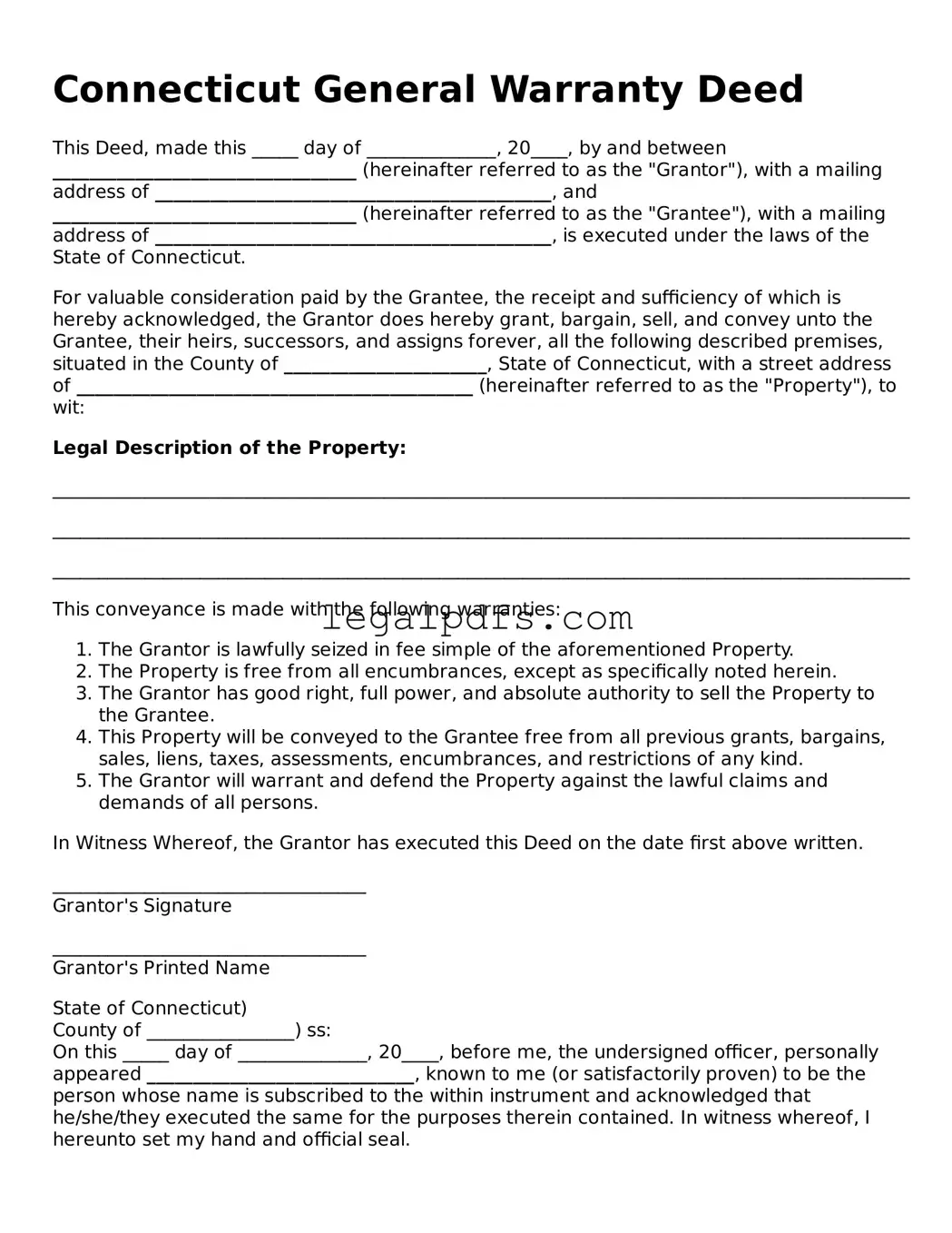Connecticut General Warranty Deed
This Deed, made this _____ day of ______________, 20____, by and between _________________________________ (hereinafter referred to as the "Grantor"), with a mailing address of ___________________________________________, and _________________________________ (hereinafter referred to as the "Grantee"), with a mailing address of ___________________________________________, is executed under the laws of the State of Connecticut.
For valuable consideration paid by the Grantee, the receipt and sufficiency of which is hereby acknowledged, the Grantor does hereby grant, bargain, sell, and convey unto the Grantee, their heirs, successors, and assigns forever, all the following described premises, situated in the County of ______________________, State of Connecticut, with a street address of ___________________________________________ (hereinafter referred to as the "Property"), to wit:
Legal Description of the Property:
_____________________________________________________________________________________________
_____________________________________________________________________________________________
_____________________________________________________________________________________________
This conveyance is made with the following warranties:
- The Grantor is lawfully seized in fee simple of the aforementioned Property.
- The Property is free from all encumbrances, except as specifically noted herein.
- The Grantor has good right, full power, and absolute authority to sell the Property to the Grantee.
- This Property will be conveyed to the Grantee free from all previous grants, bargains, sales, liens, taxes, assessments, encumbrances, and restrictions of any kind.
- The Grantor will warrant and defend the Property against the lawful claims and demands of all persons.
In Witness Whereof, the Grantor has executed this Deed on the date first above written.
__________________________________
Grantor's Signature
__________________________________
Grantor's Printed Name
State of Connecticut)
County of ________________) ss:
On this _____ day of ______________, 20____, before me, the undersigned officer, personally appeared _____________________________, known to me (or satisfactorily proven) to be the person whose name is subscribed to the within instrument and acknowledged that he/she/they executed the same for the purposes therein contained. In witness whereof, I hereunto set my hand and official seal.
__________________________________
Notary Public
My Commission Expires: ______________
